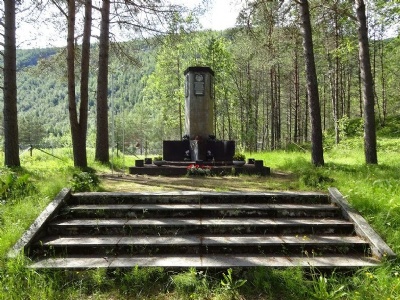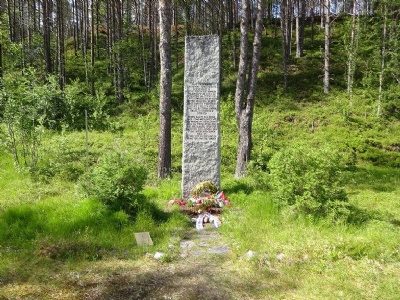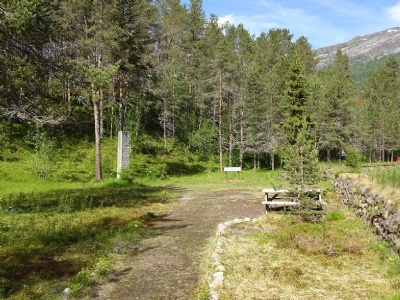Beisfjord
In Beisfjord, about ten kilometres southeast of Narvik, SS established a detention camp for Yugoslav partisans in June 1942. Yugoslavs with weapons were seen as partisans and not as soldiers. Therefore, it was considered that they were not subject to the laws of war and could therefore be treated in a brutal manner. In mid-July 1942, 287 prisoners were murdered as a cosequense of a suspected typhoid epidemic. Most were shot, but some were burned to death when the Germans set fire to the infirmary. The remaining 588 prisoners were sent to Upper Jernvann, about thirty kilometres north of Beisfjord where they were forced to establish a temporary camp. Of these, 242 died while the others were sent back to Beisfjord at the end of August 1942. In 1942, the camp was taken over by the German armed forces (Wehrmacht). The remaining 152 prisoners were sent to other camps and the camp was filled with Soviet prisoners of war. Until the autumn of 1944 there were about 600 prisoners in the camp, however, when the Germans began to evacuate northern Finland and northern Norway, the number of prisoners increased rapidly and in October about 1,600 prisoners were in the camp. Beisfjord became the largest prisoner-of-war camp in northern Norway. Both Yugoslav and Soviet prisoners were used as slave workers in extreme conditions. The camp was liberated in May 1945.
Current status: Demolished with monument (2017).
Location: 68°22'04 N, 17°35'50 E
Get there: Car.
Follow up in books: Moore, Bob, Fedorowich, Kent: Prisoners of War and Their Captors in World War II (1996).




There is nothing left of the camp and the former camp area now consists of houses and other buildings. After the war, Soviet prisoners of war and Yugoslavs were buried just outside the camp. Later they were removed and re-buried at other places. On this site there are now monuments, one for the Soviet prisoners of war and one for the Yugoslav prisoners.